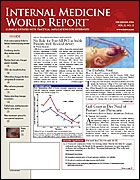Alarming Spread of Multidrug-Resistant Acinetobacter Infections
From Interscience Conference on Antimicrobial Agents & Chemotherapy Broad-Spectrum Antibiotics No Longer Appropriate
Acinetobacter
Acinetobacter
SAN FRANCISCO—The detection of gram-negative isolates cultured from patients in US hospitals has been increasing dramatically since 1995. In 2004, 17% of isolates with susceptibility data reported to the National Nosocomial Infection Surveillance (NNIS) system were no longer susceptible to any of the antibiotic classes, according to new data presented at the Interscience Conference on Antimicrobial Agents and Chemotherapy meeting.
Acinetobacter
Between 1995 and 2004, more than 8500 isolates were reported to the NNIS. A total of 3600 of the isolates had antibiotic susceptibility data.
Isolates remaining susceptible to only 1 antibiotic class increased from 14% to 25.6%.
Acinetobacter
The rate of infection resistance increased:
• From 39% to 66% for beta-lactams
• From 50% to 73% for fluoroquinolones
• From 19% to 31% for aminoglycosides
• From 9% to 39% for carbapenems.
“This continues to be a wake-up call for both practicing physicians and the pharmaceutical industry,” said Roberta Carey, PhD, chief, Epidemiology and Laboratory Branch, Centers for Disease Control and Prevention. “We have a great need for new antimicrobial agents to be developed, and certainly it is a wake-up call for infection-control physicians.”
Acinetobacter
Dr Carey said many infections can no longer be treated with broad-spectrum antibiotics, such as imipenem (Primaxin) or amikacin (Amikin), which are generally considered the agents of last resort for highly-resistant bacteria.
Acinetobacter
Patients who had infections with multidrug-resistant were more likely to have pneumonia (46%) than bloodstream infections (13%) or surgical site infections (10%). Of note, 61% of the patients were between the ages of 19 and 64 years. Most infections were reported from hospitals with >200 beds.
IMWR.
“The persons getting these infections are young, and it is occurring mostly in the northeast part of the United States. Physicians in a growing number of cases may need to think about an infectious disease consultation to try to devise a new kind of therapeutic regimen, which is something they may not ordinarily think about. They can no longer just treat and then move onto the next patient. Physicians really need to pay attention,” Dr Carey told
Although only 26% of the reporting hospitals were located in the Northeast, 74% of the multidrug-resistant infections were reported from this region. “Hospitals in Brooklyn, NY, for example, have had a significant problem, and it has been noted in soldiers coming back from Iraq and Afghanistan who have severe burns and injuries,” she said.
